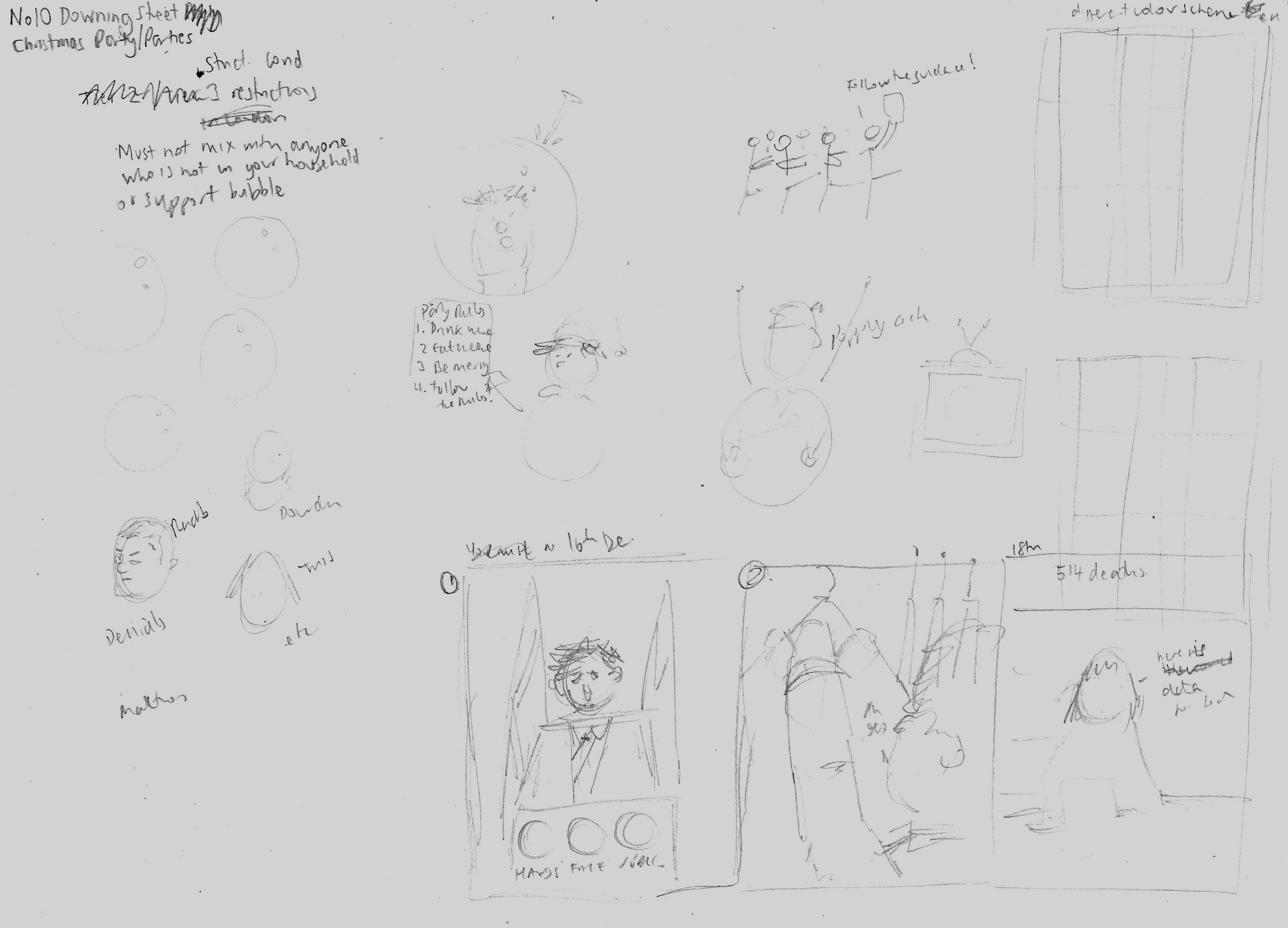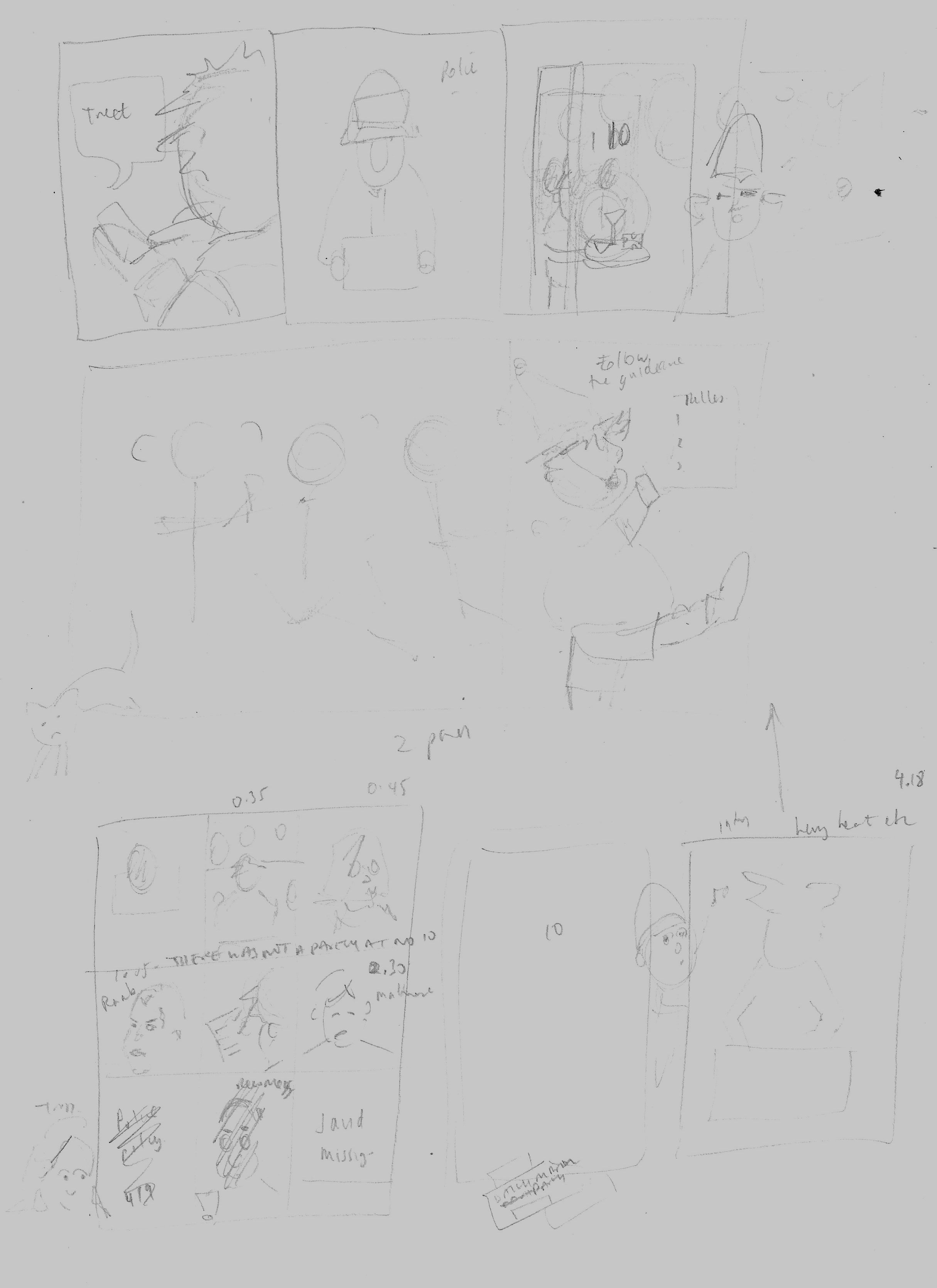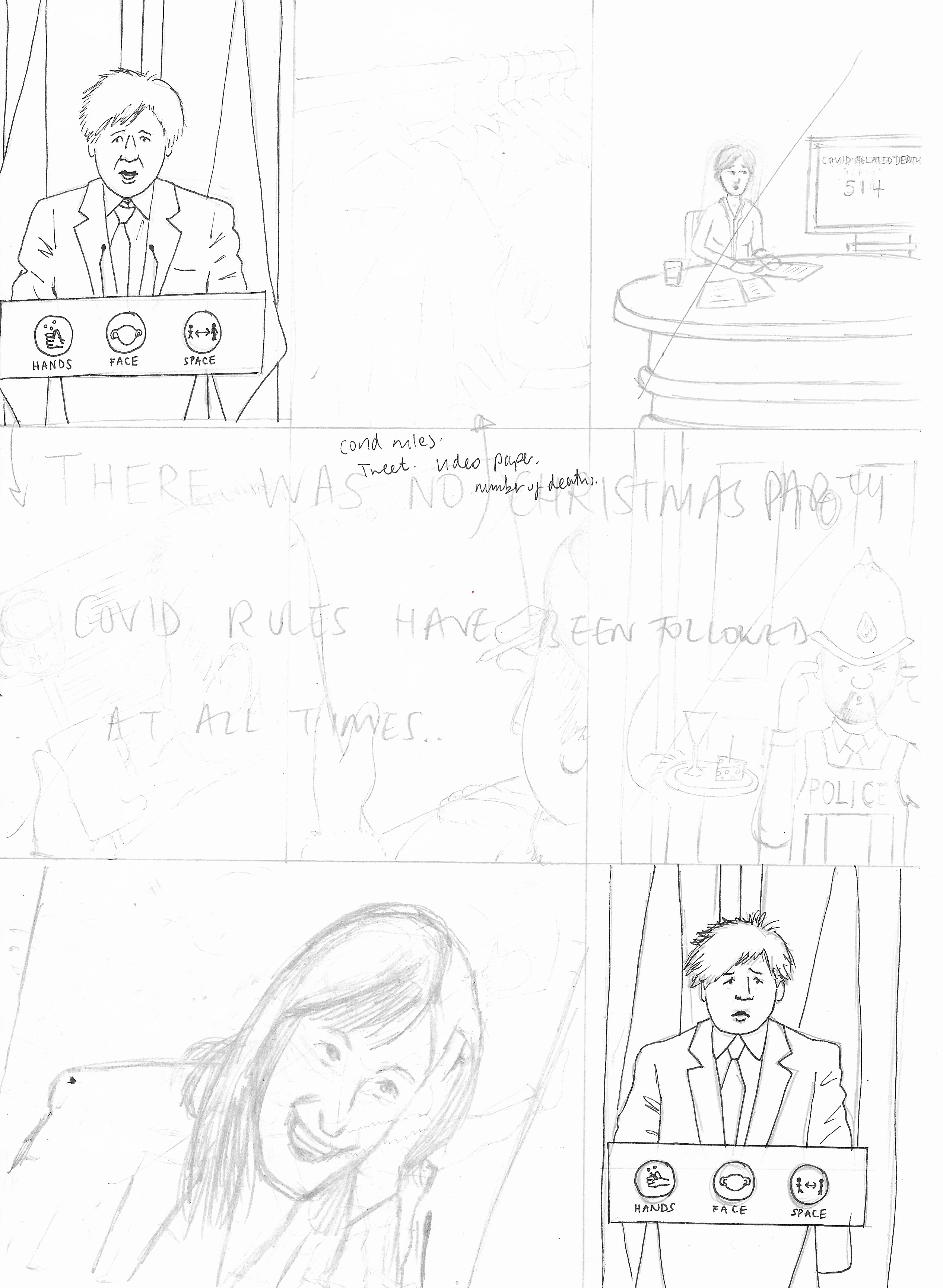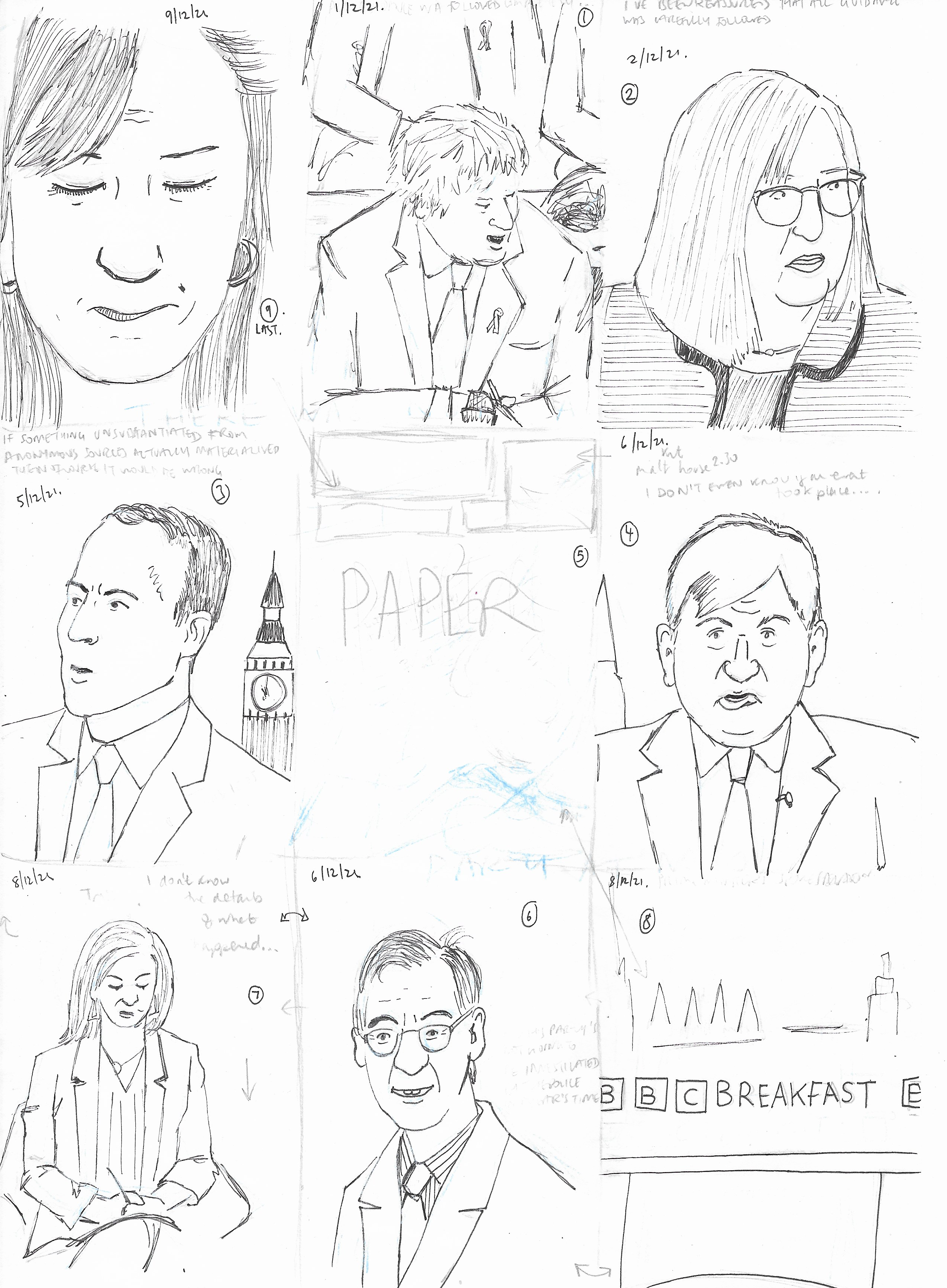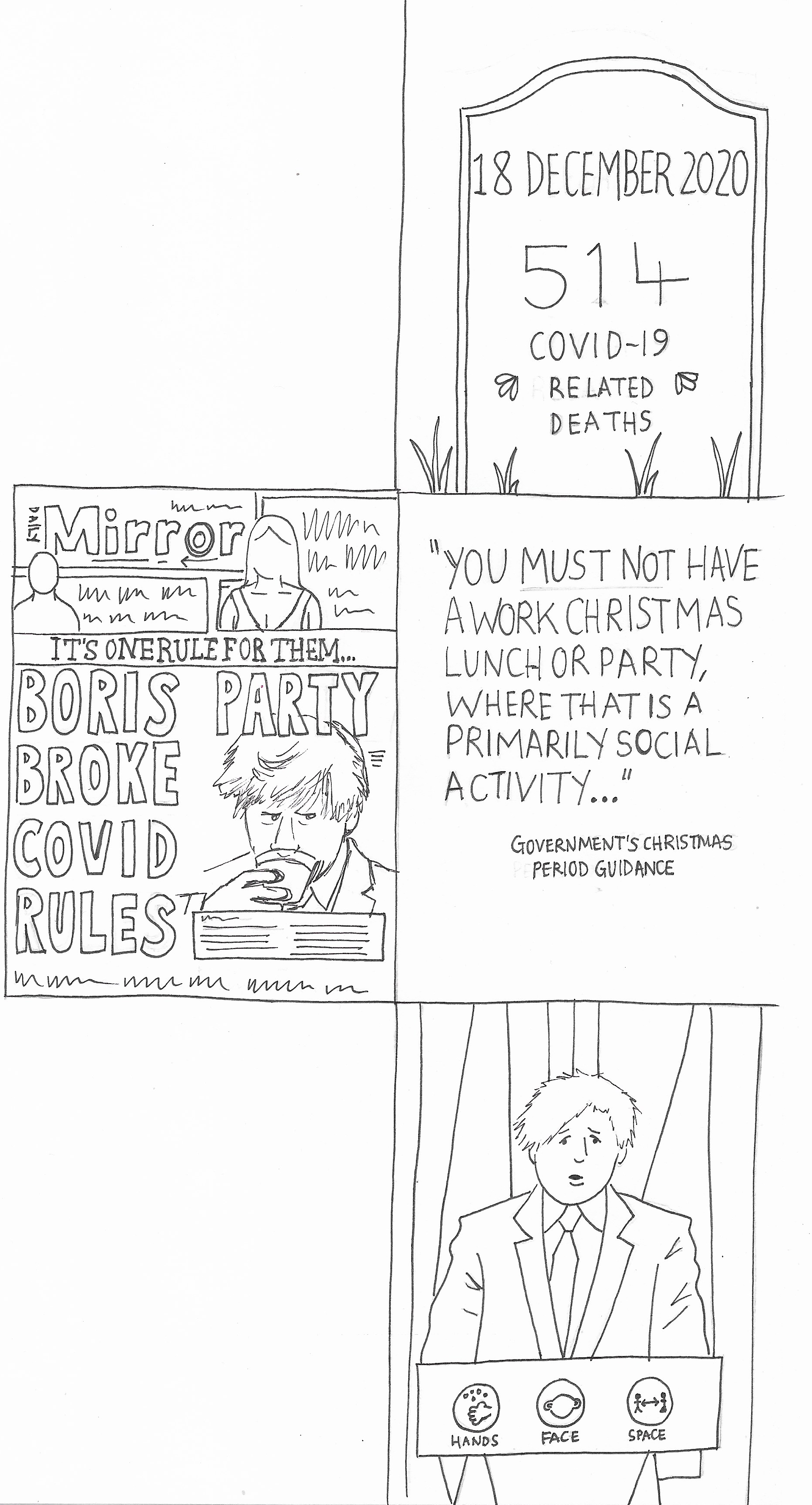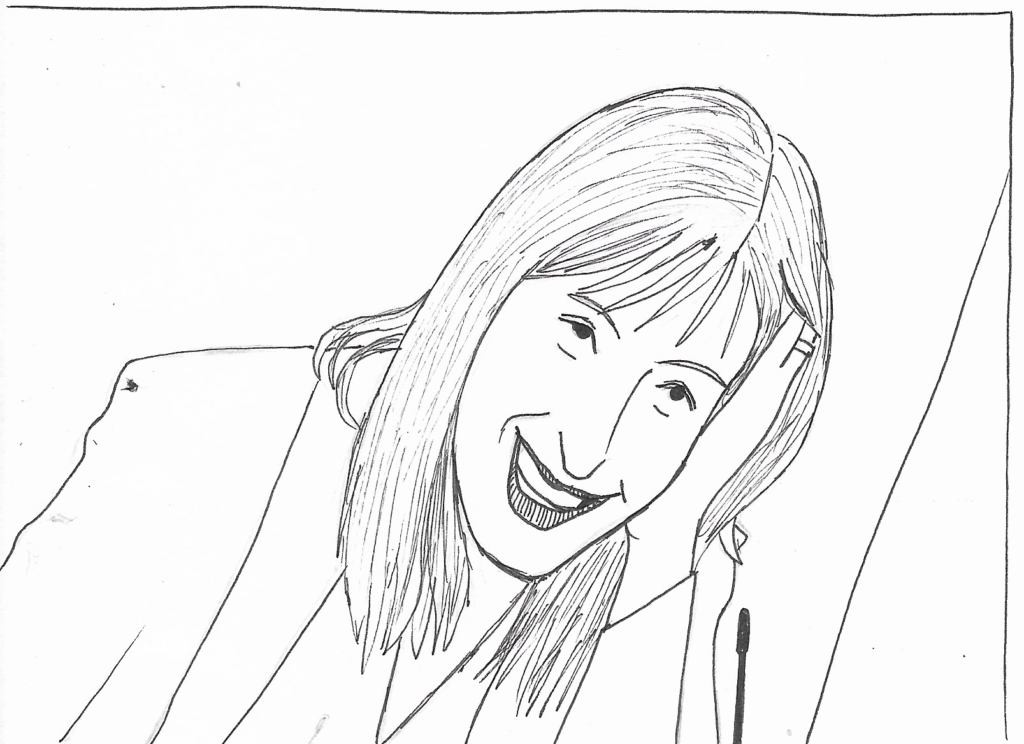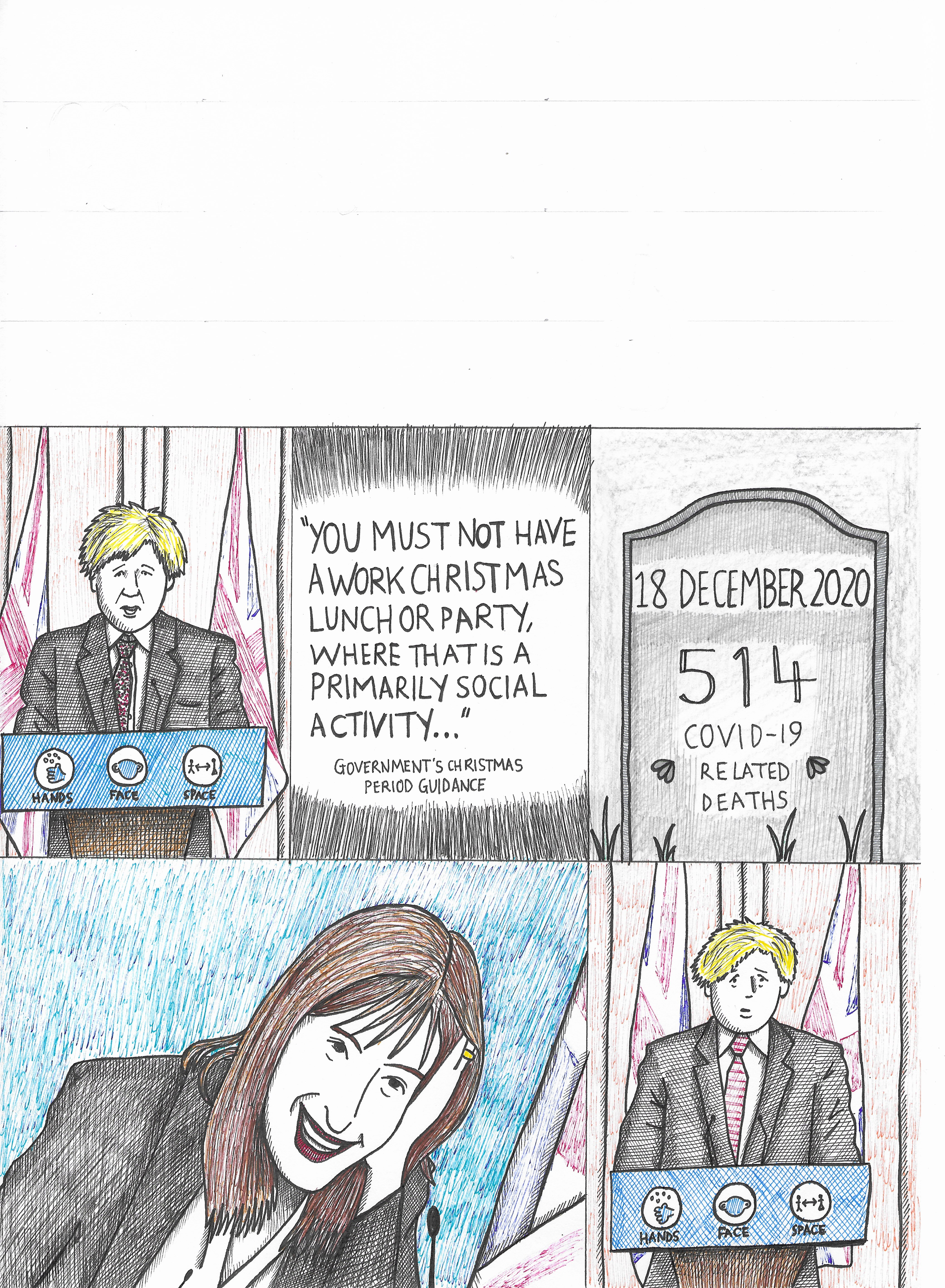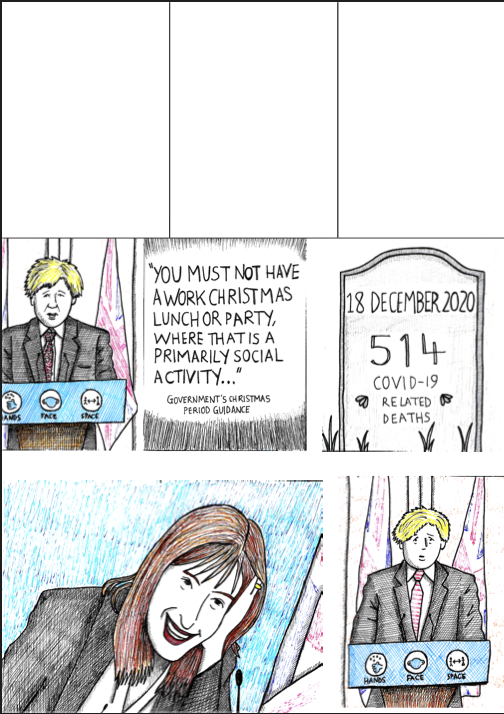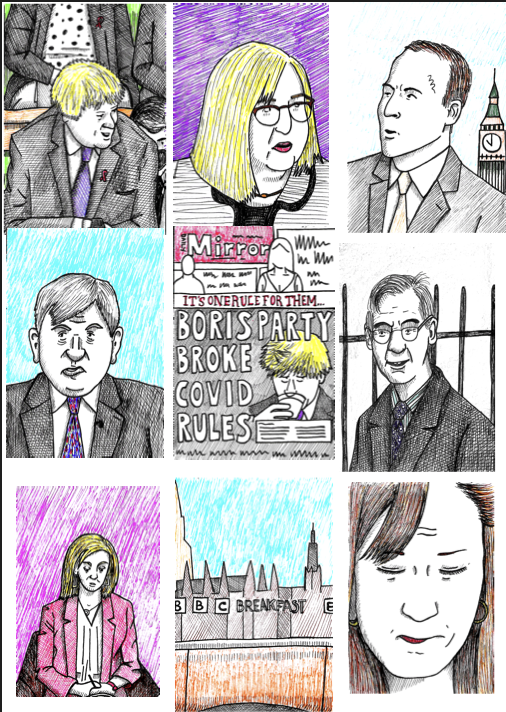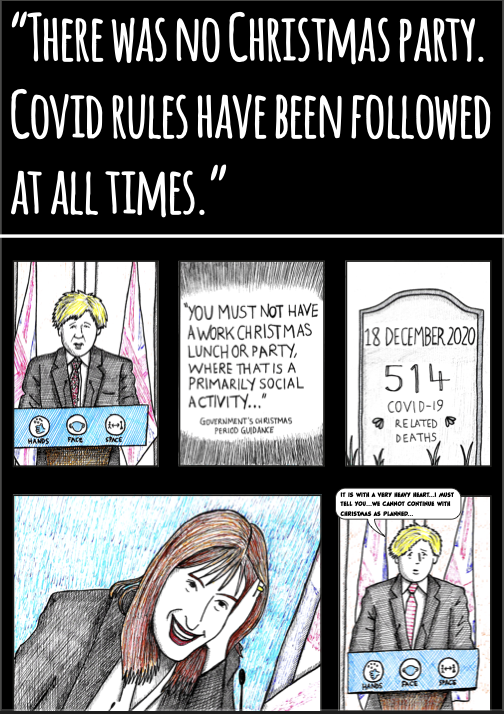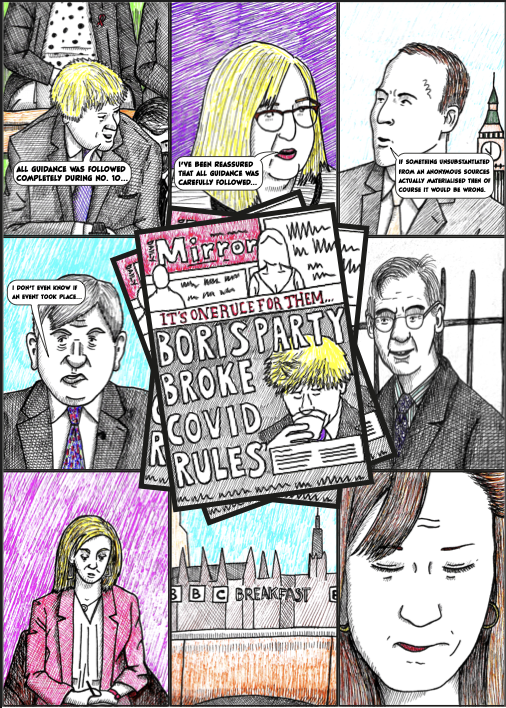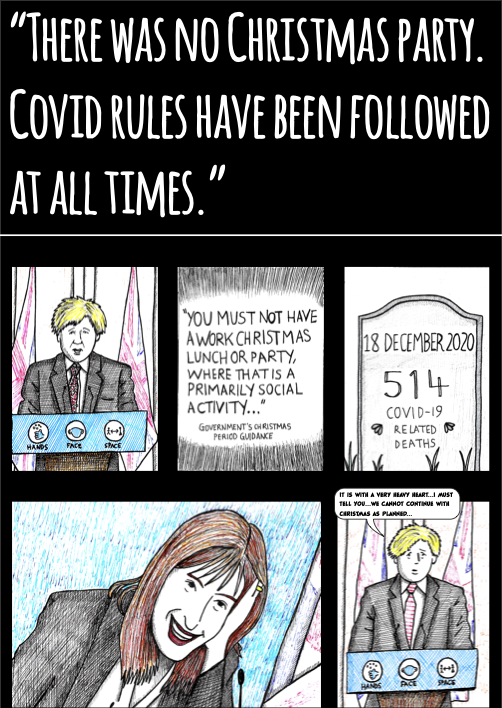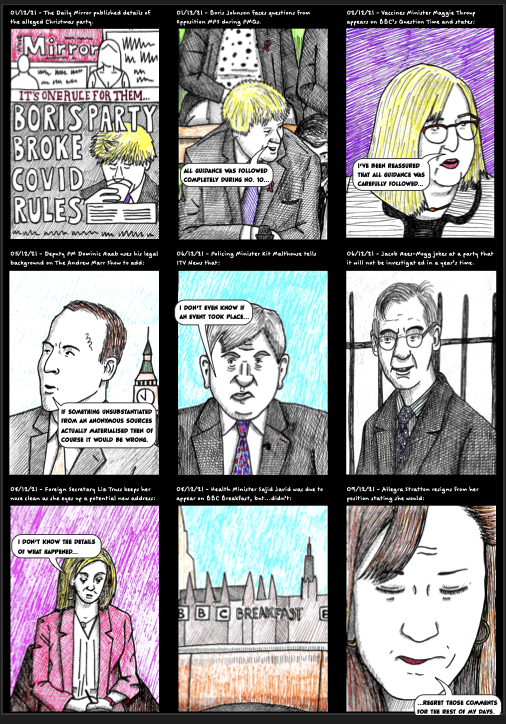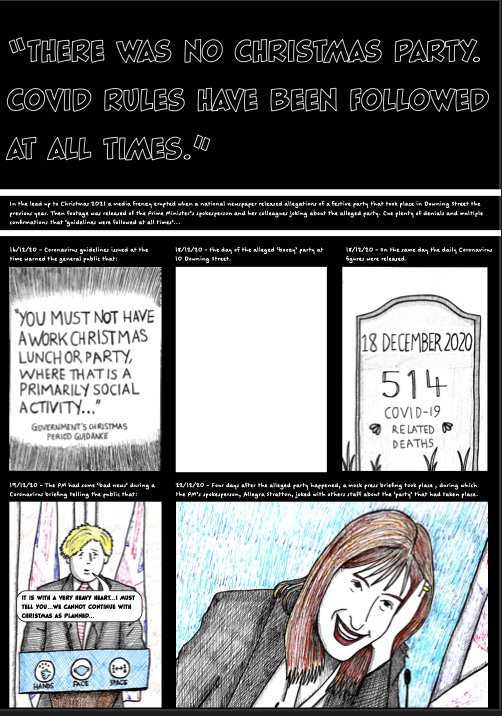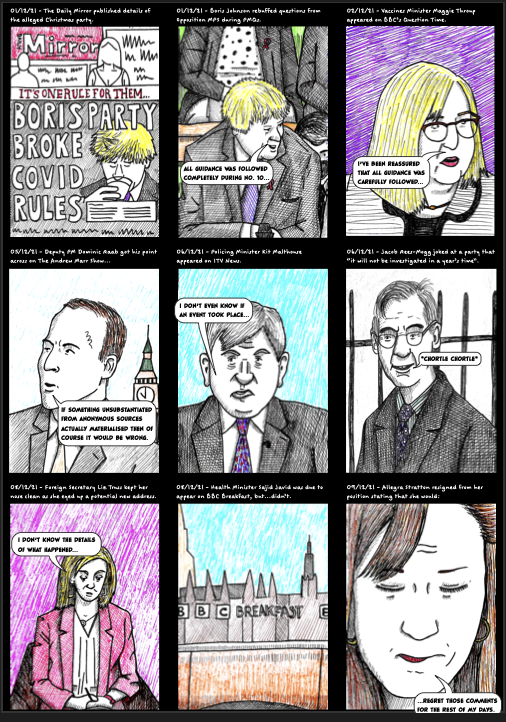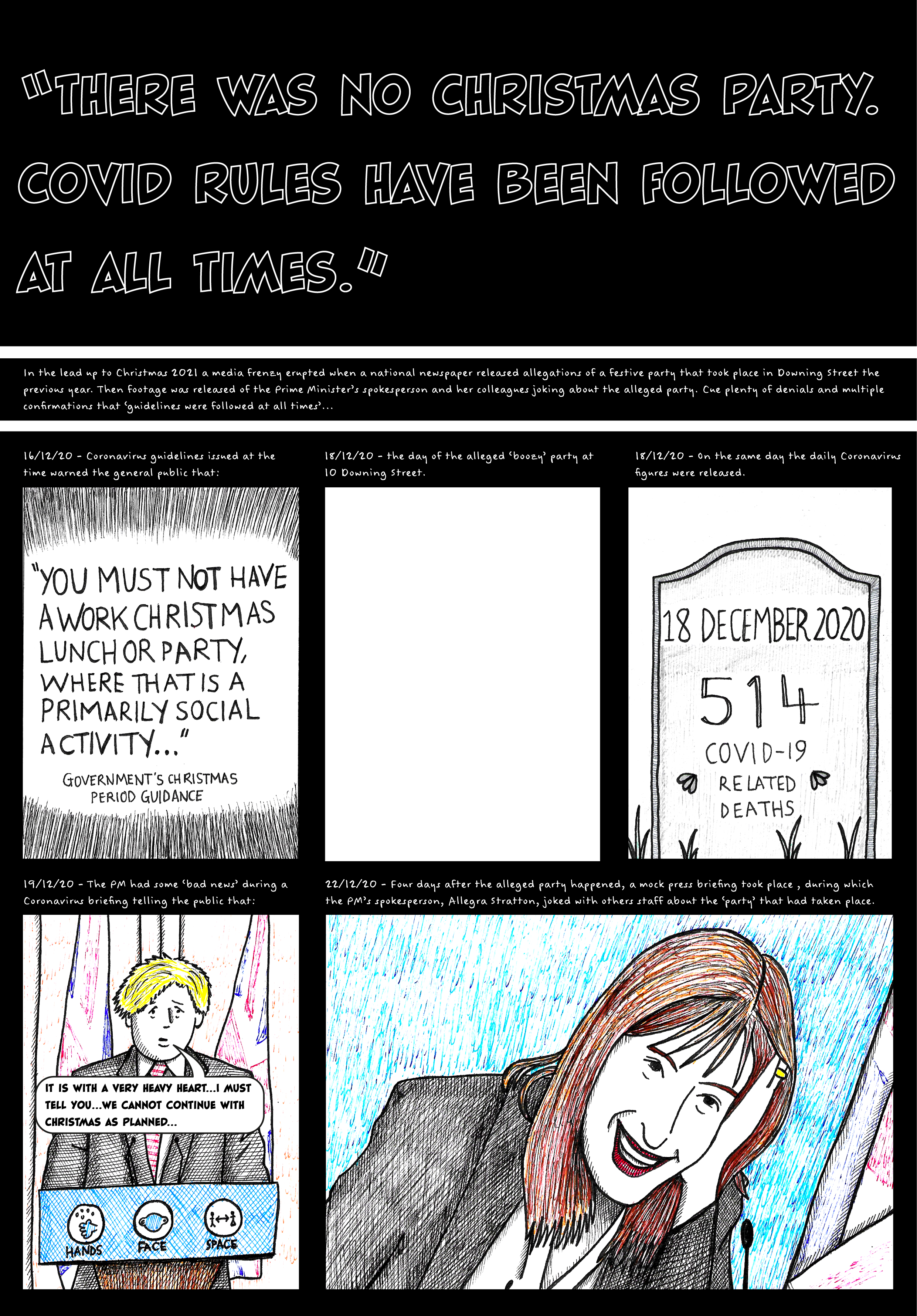Brief
For this exercise you are to produce a two-page comic narrative of an event. The size of the panels, grid format and materials are entirely up to you. It could be a black and white strip, full-colour, a combination of both of these approaches or even including collage elements.
There are two options for which event you document:
- A news story. For this option you will need to compile a reference file. Let’s say you have chosen a current event such as a political election or sports fixture; you will need to obtain photo-reference, particularly of the principal characters, but also newsreaders, significant locales and supporting characters.
- A domestic event. This could still be an event, but can be something closer to home like a family birthday, a holiday, or a wedding. You will still need to compile references, but it could be photographs of tourist spots, people you know or local landmarks.
Try to make it as current as possible. That way you can compile your research in a ‘live’ context, responding to contemporary visual material quickly and spontaneously. Think of this exercise as writing a news report but as a comics story rather than a short story or newspaper article.
Research
I had been feeling quite apprehensive about this exercise ever since I read through the unit. I decided, as per usual, to find some examples of artists who specialised in reportage illustration. Some of the names I discovered included:
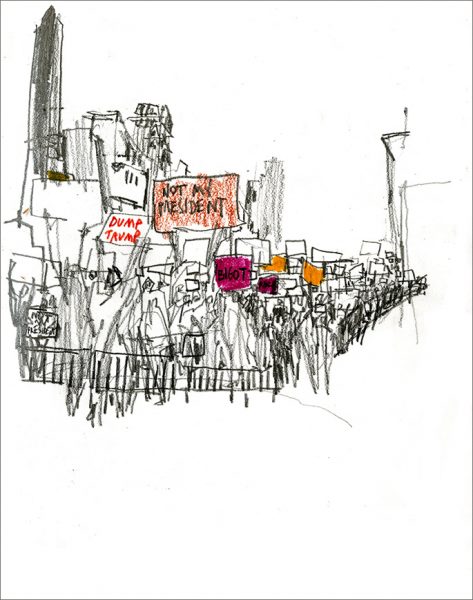
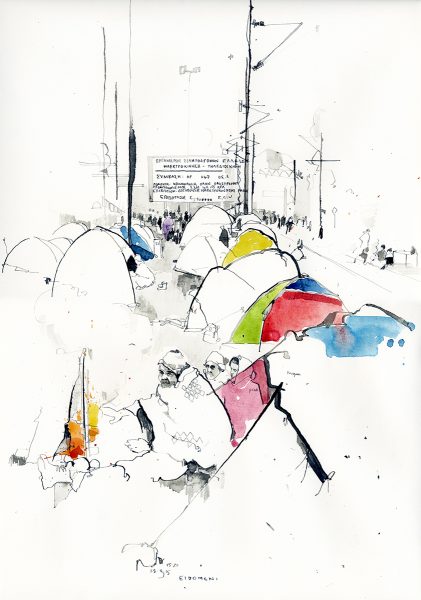

I noted that the artwork tended to not be too ‘precious’ and had the feeling of capturing a fleeting moment in time. The work looked like that which would be found in a sketchbook using sparse materials.
I also looked at examples of the titles suggested in the introduction: Penny Illustrated Paper, Illustrated London News, Harper’s Weekly and Frontline Combat. Some of the illustrations in these publications were incredibly detailed and I found myself more inclined to take the time to absorb the visual information than with most photographs that are used for news stories in the present day.
Selecting an Event
One thing I was certain about was that I would be choosing a news event as there had been no domestic events of any interest! However, as I was working on this exercise over the Christmas period, there were not many current news stories available to choose from (as apparently very little happens in the world during that time…). I therefore chose to go back to few weeks prior when the media was full of stories of alleged Christmas parties at Downing Street.
Collating Information
I used ITV News, BBC and the Daily Mirror as sources of information with regards to the dates, events and reactions. I found this most readily via a timeline available via ITV.
I also spent some time watching short bulletins via BBC News to take notes and then screen captured certain people that might potentially be included in the comic narrative.
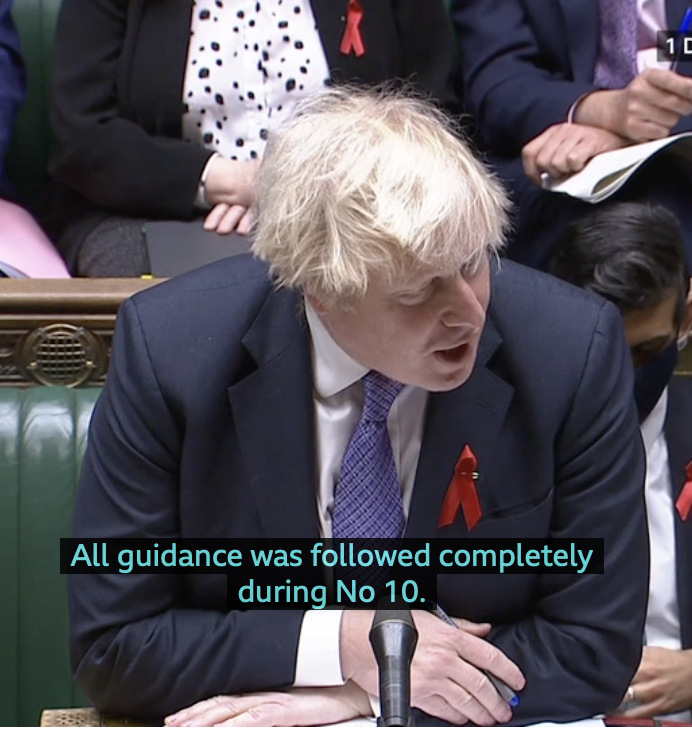
I found that there was a lot of information to take in and try to collate succinctly for a comic book version.
Drafts
Once I had a sense of the timeline of events, I began to draw some of my ideas, which have not scanned very clearly.
Once I had started get some of these down on paper, I felt a bit more confident going forward. Next, I drew out some first draft panels in blue pencil, which I then went over using a graphite pencil.
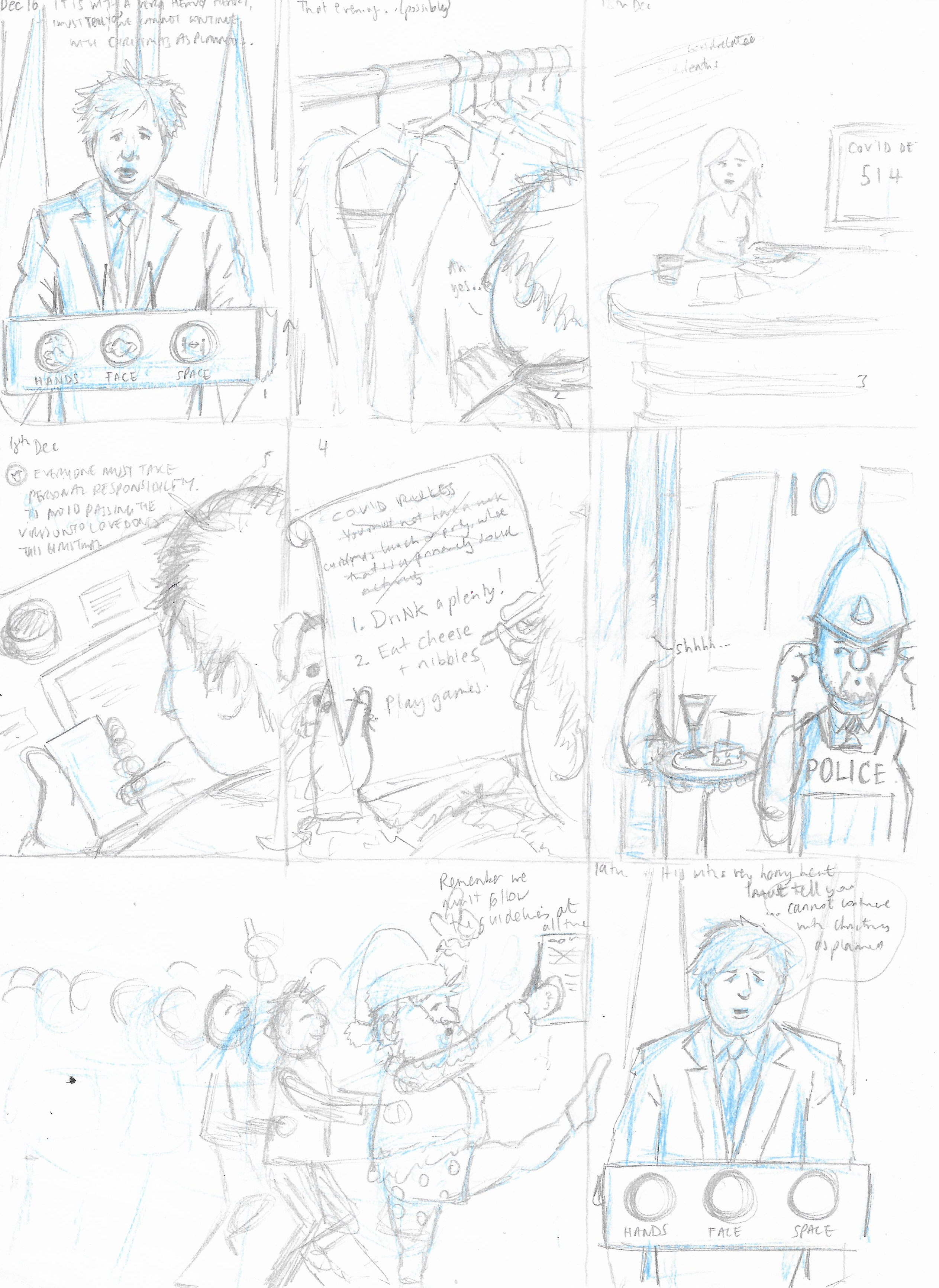
Initially I was thinking of interweaving panels of observational drawings (from the screenshots) with a satirical thread of drawings showing Boris Johnson dressed up as Santa Claus, as can be seen above, but once I started the rough sketches I found myself feeling less confident about the idea so removed the (hopefully) fictional panels and stuck with following the details provided in the news.
I moved onto draft versions using a black fineliner.
Coloured Version
I was not particularly happy with the resemblance of most of my characters to the real life versions, but decided to proceed. I used a light-box and the above drafts as guides to create final outline versions using a 0.1 fineliner. I was not sure about adding colour so rather than using pencils, as I had done in most previous exercises, I opted for a limited selection coloured fineliners that I found hidden away in my drawer. I tried to experiment with the mark making.
I wasn’t satisfied with the quality of the scanned images, as above, because the colours looked more muted than in reality. I adjusted the contrast and saturation digitally and, through experimentation, ended up with the versions below, which I felt would be better suited to the style I had in mind for my final comic narrative.
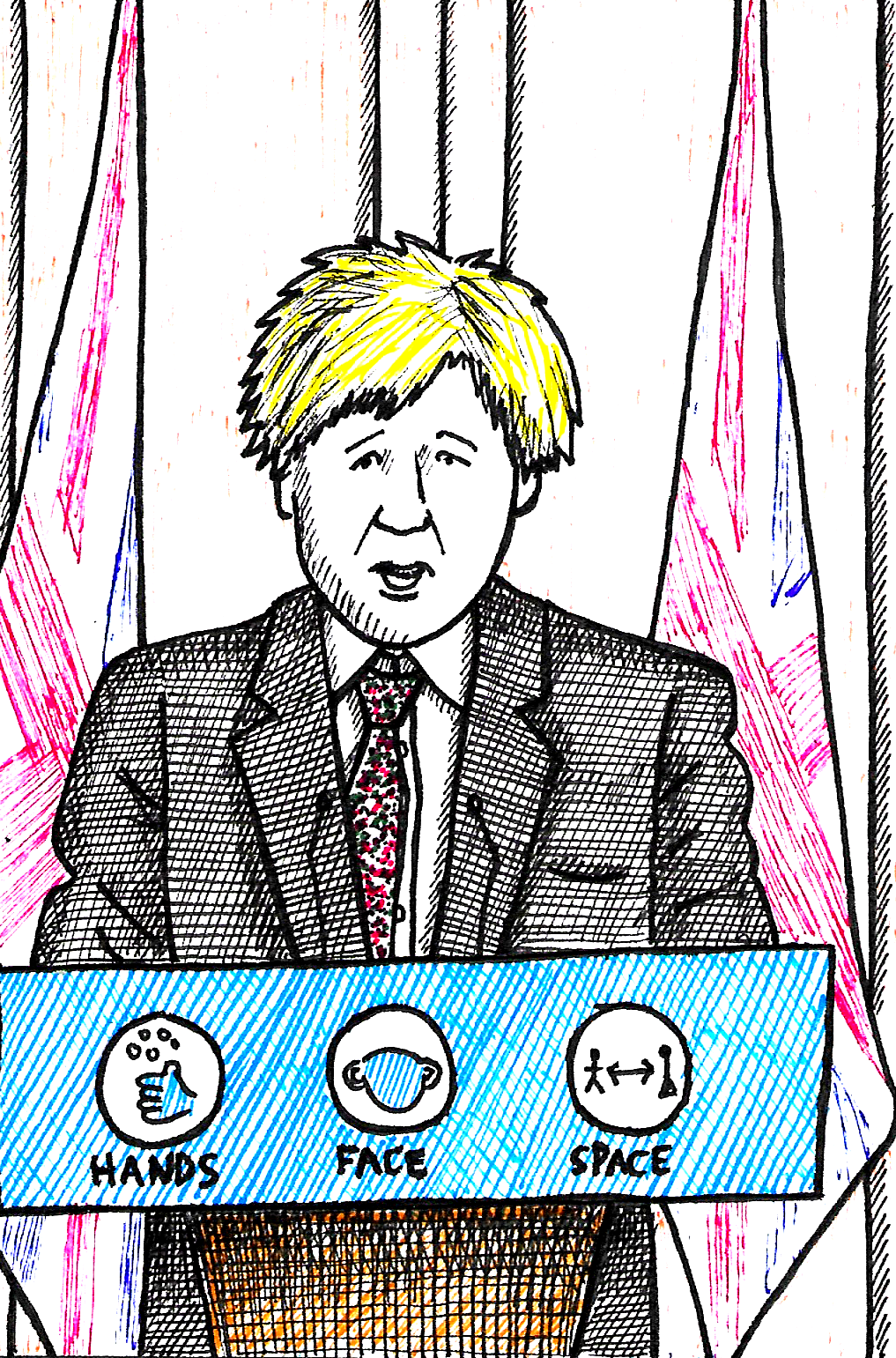
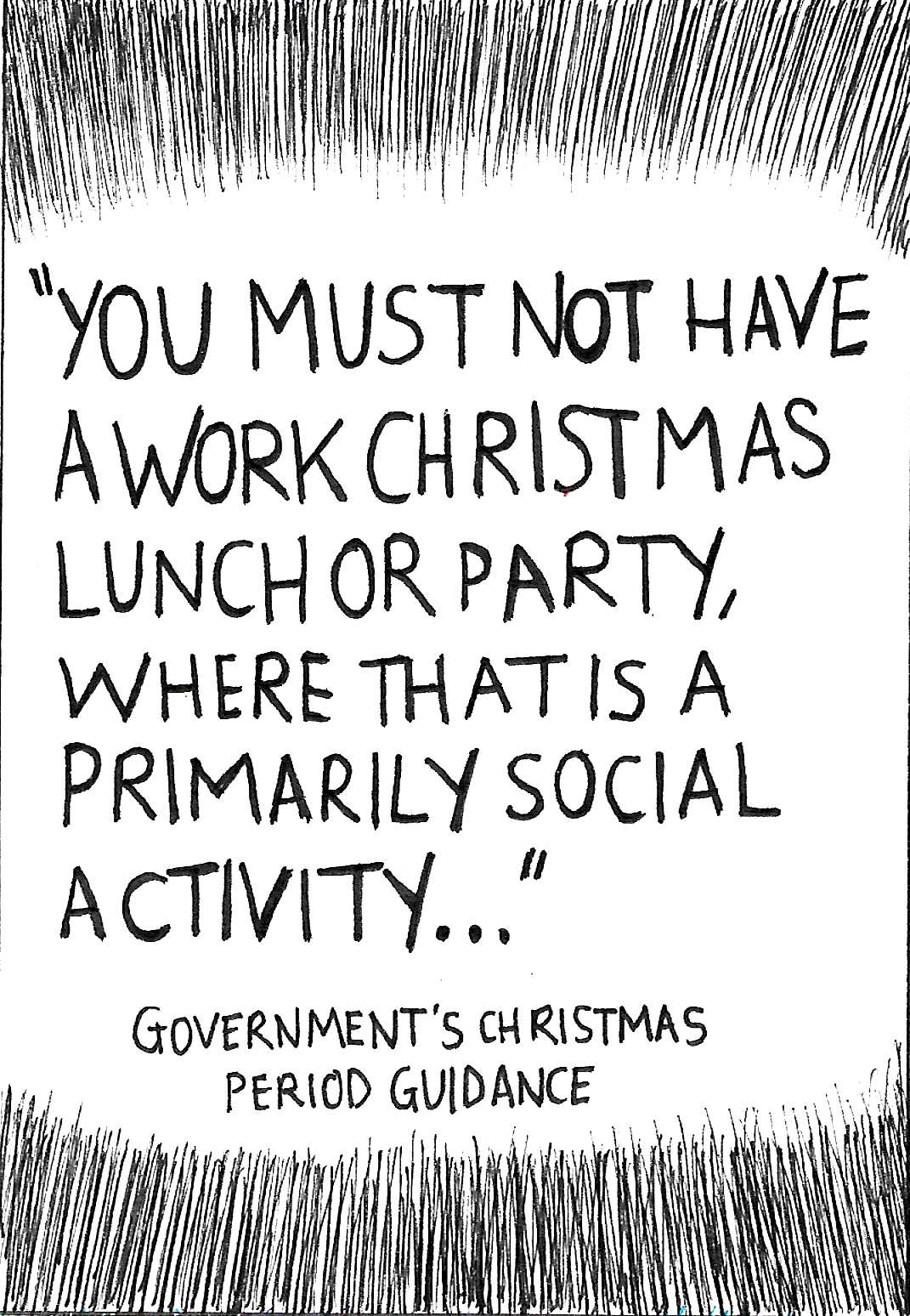
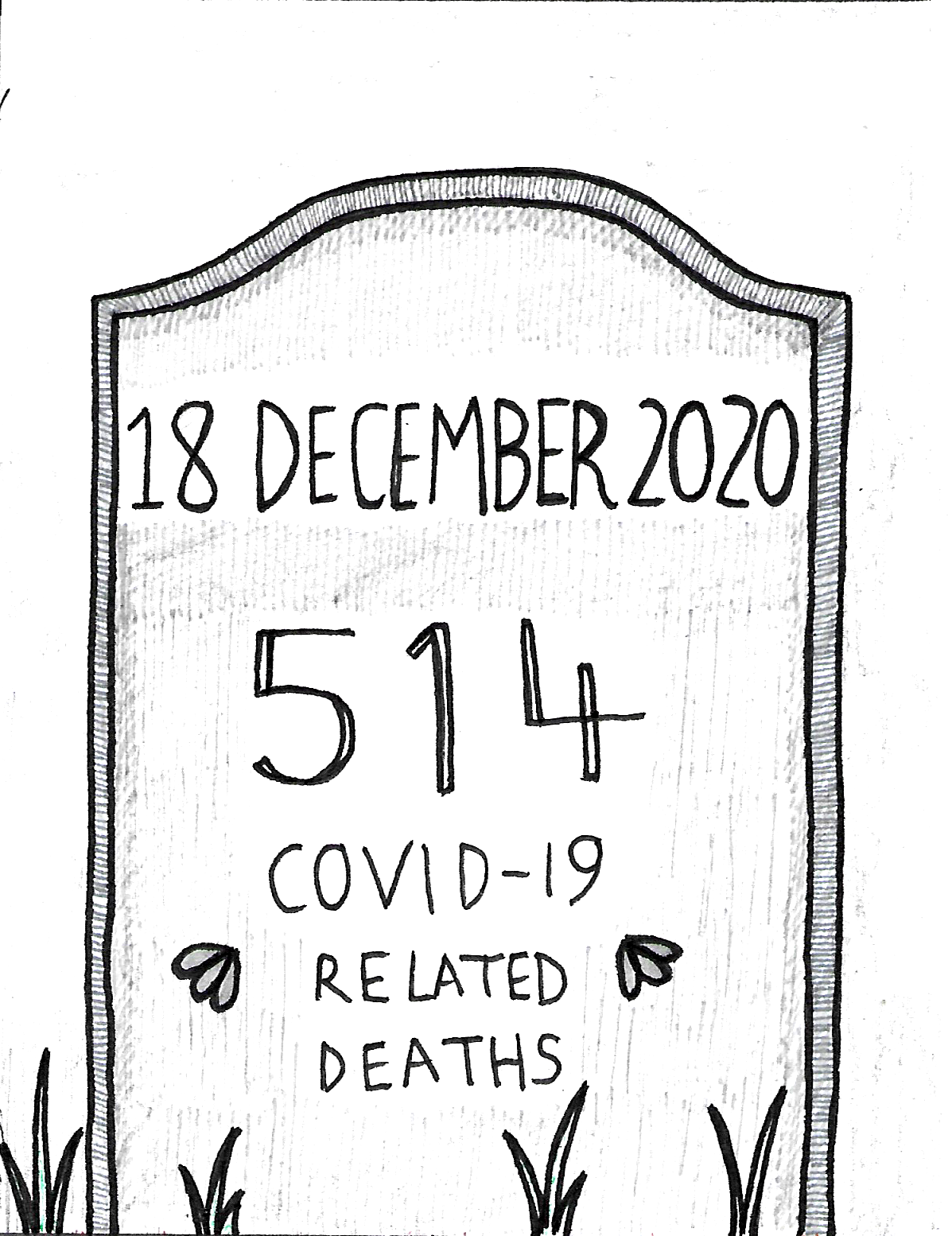
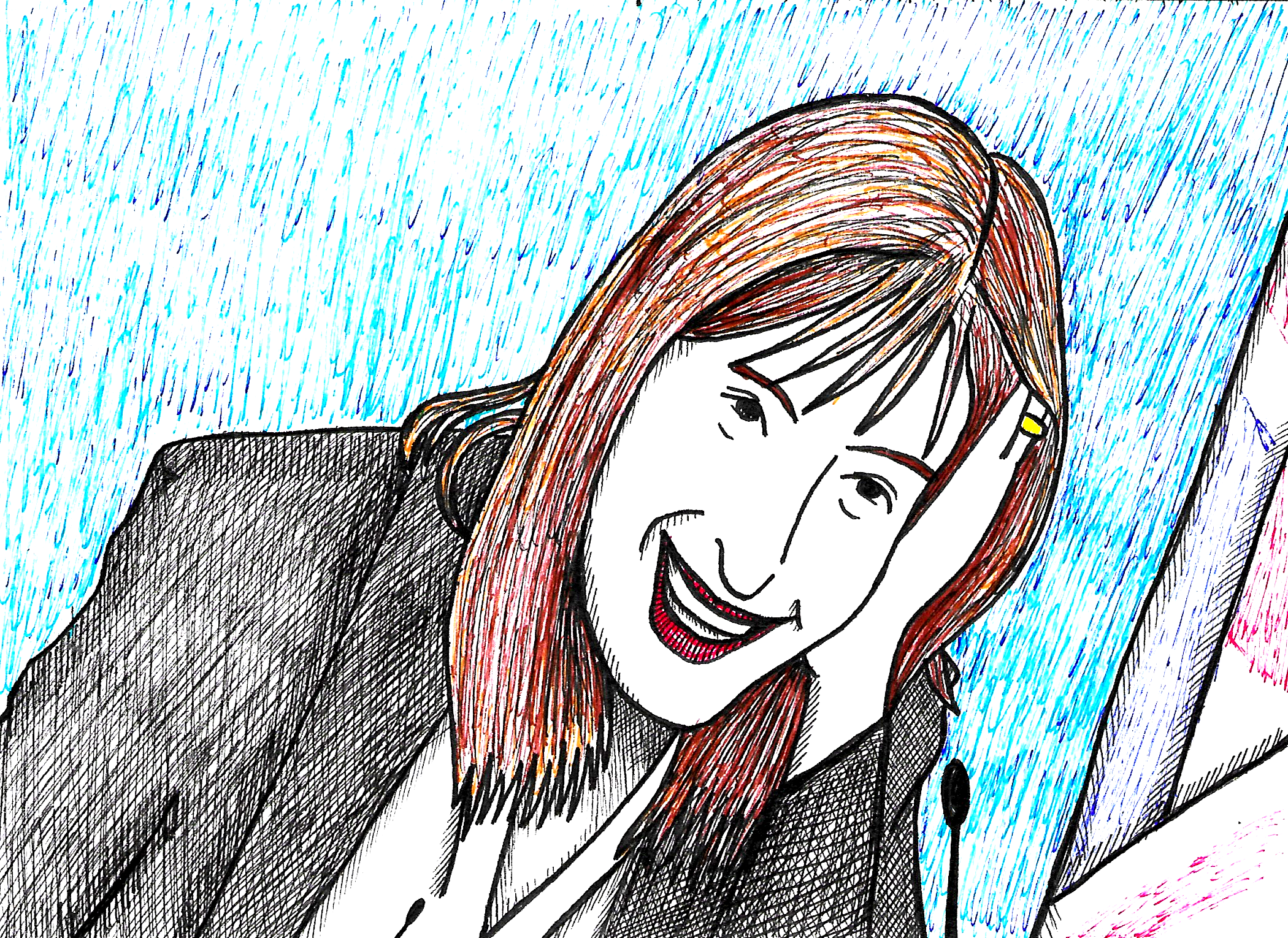
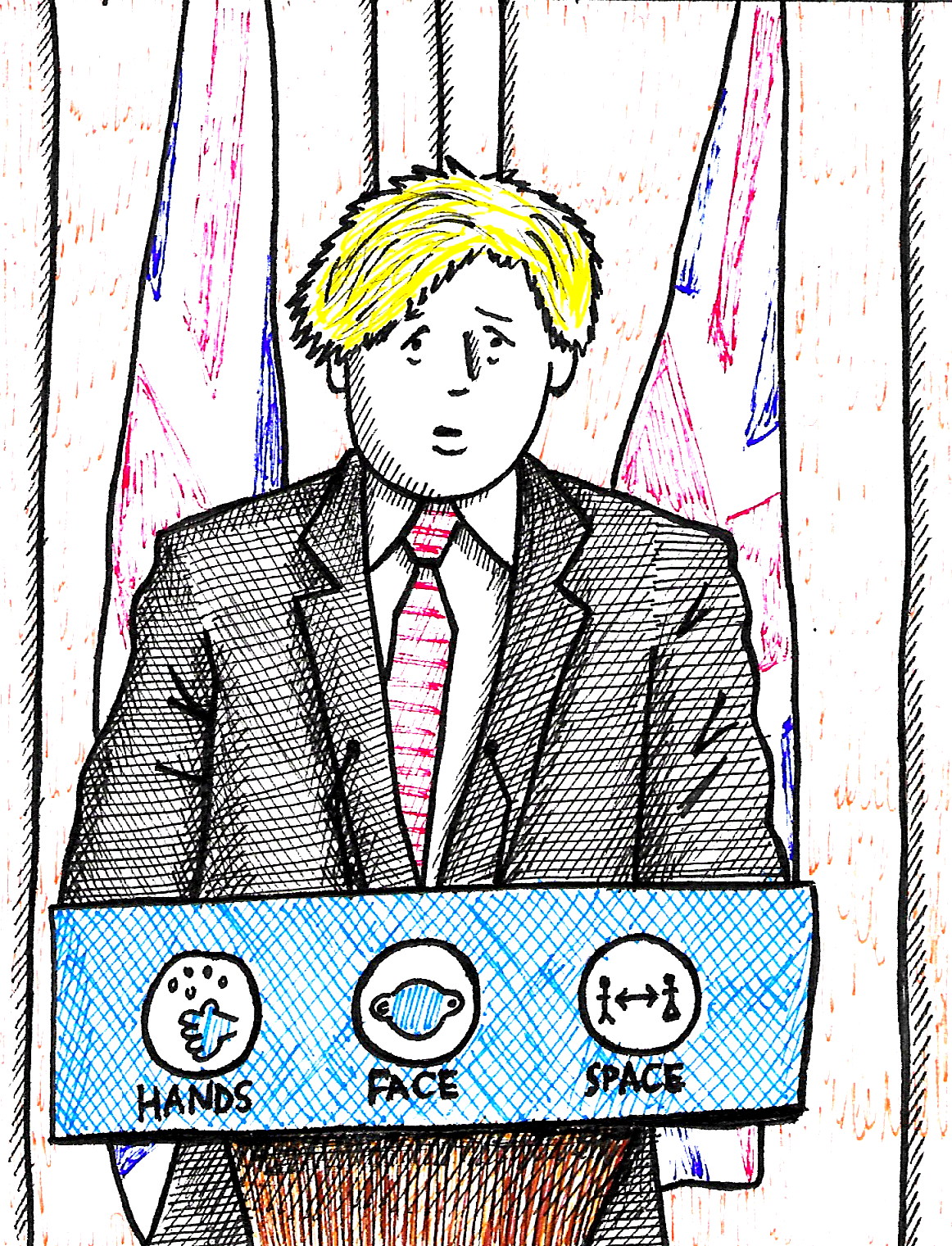
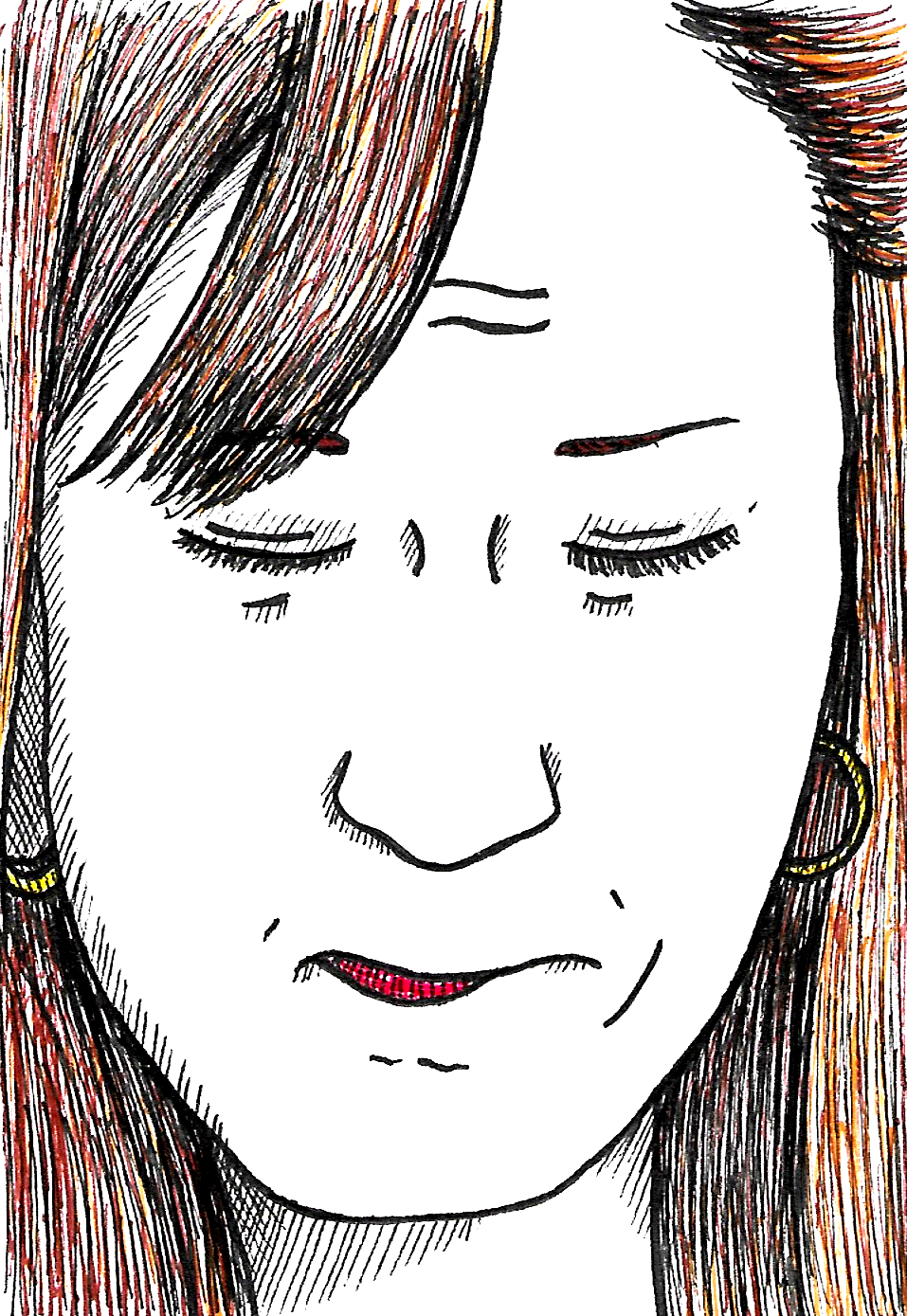
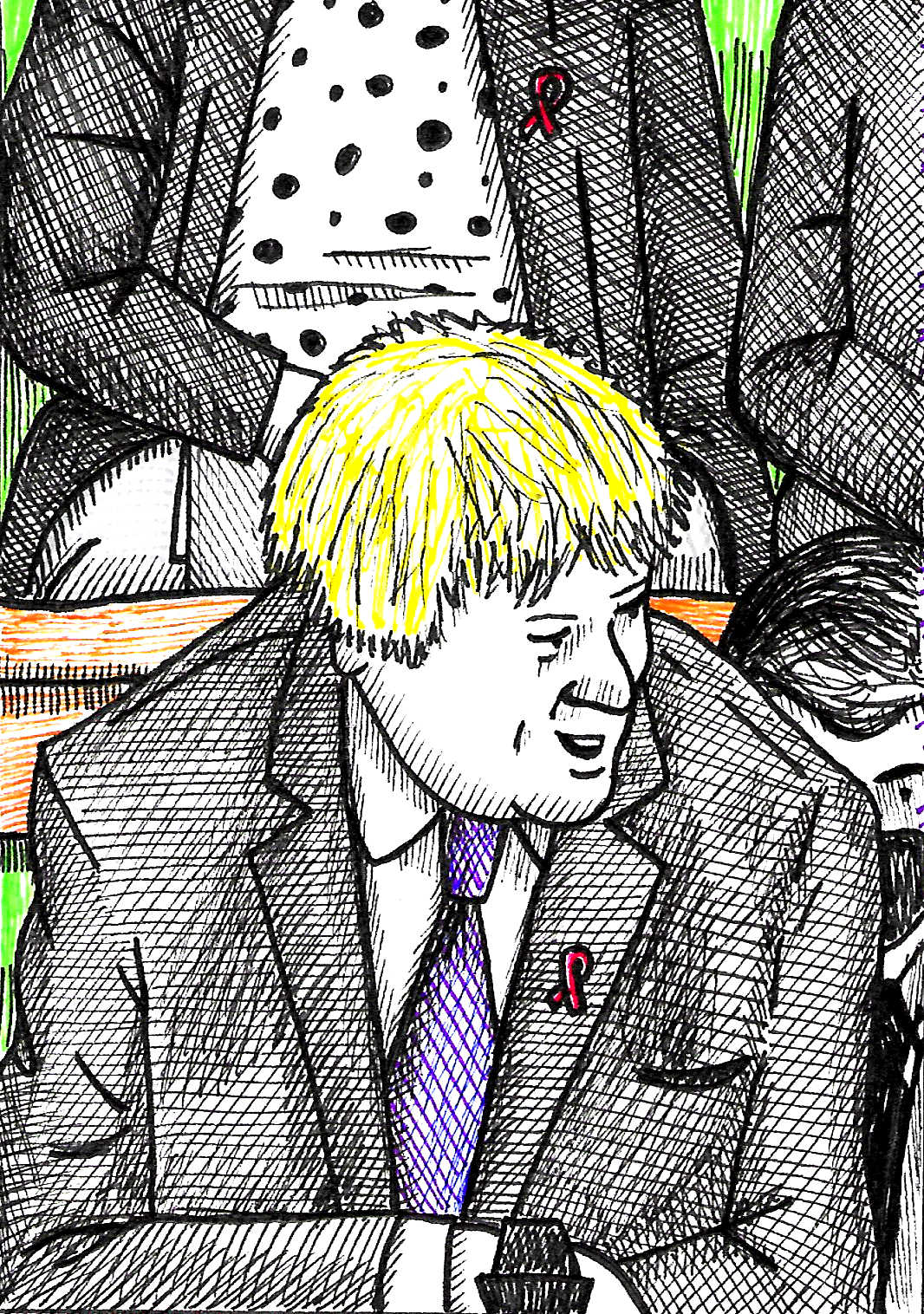
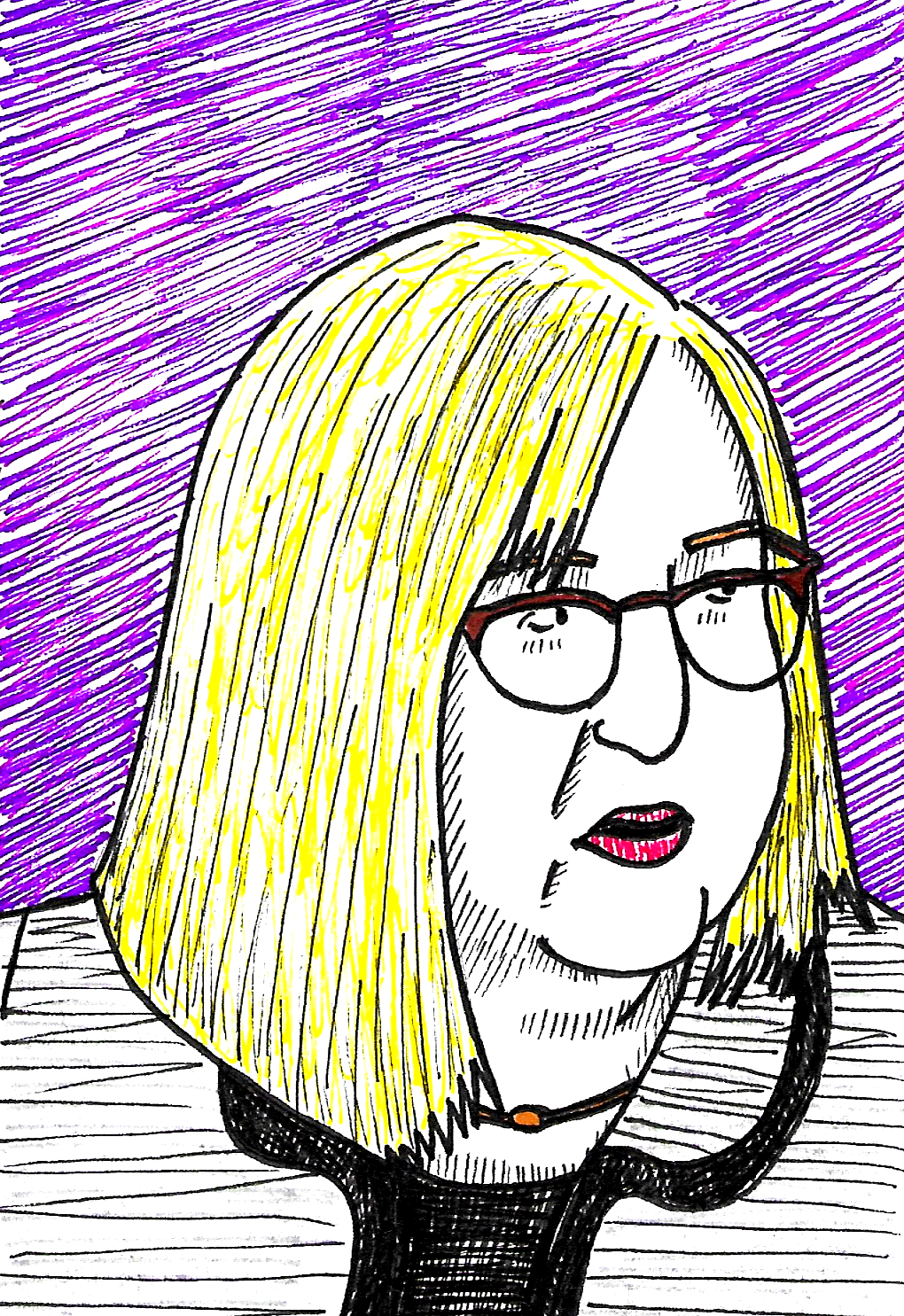
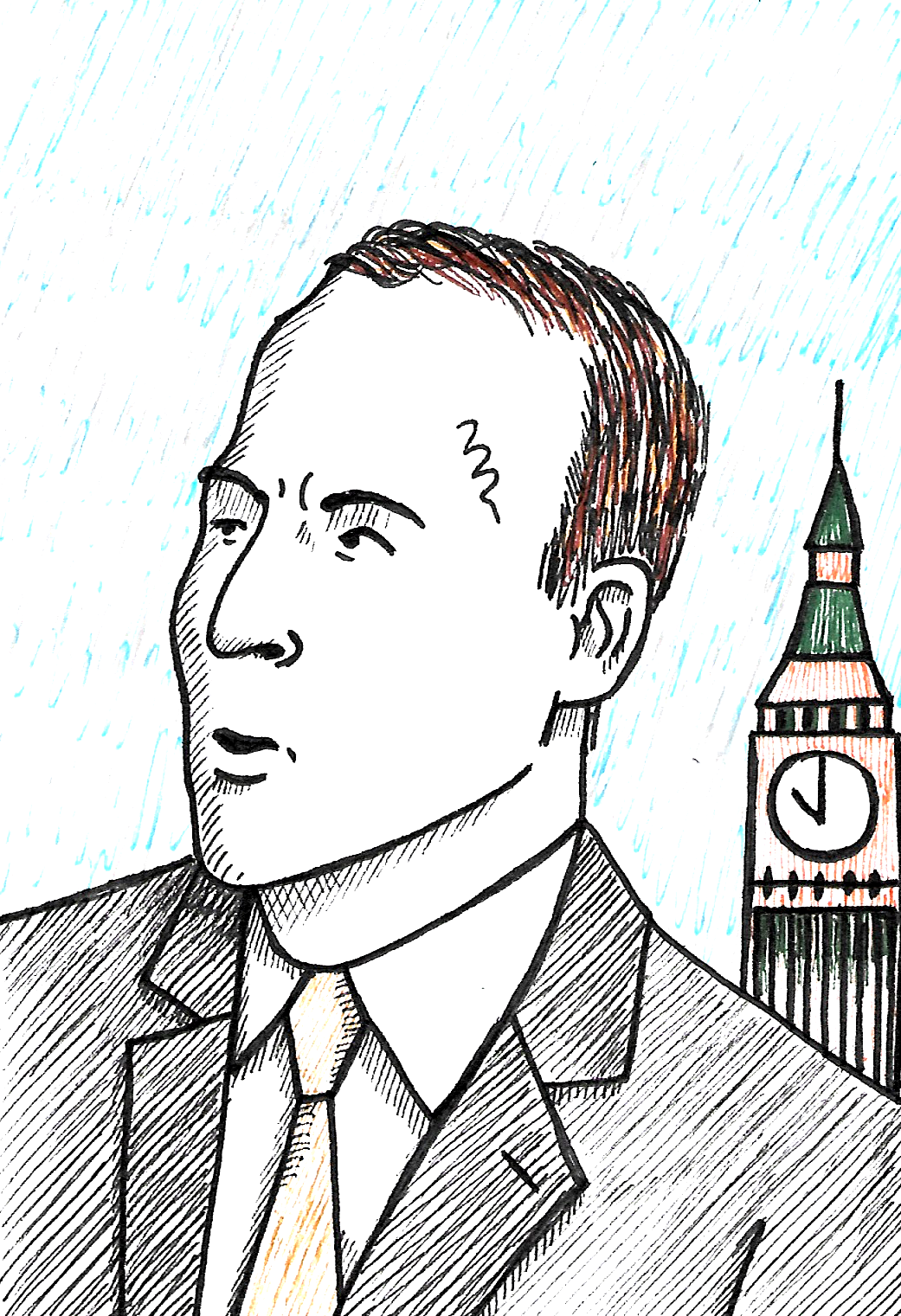
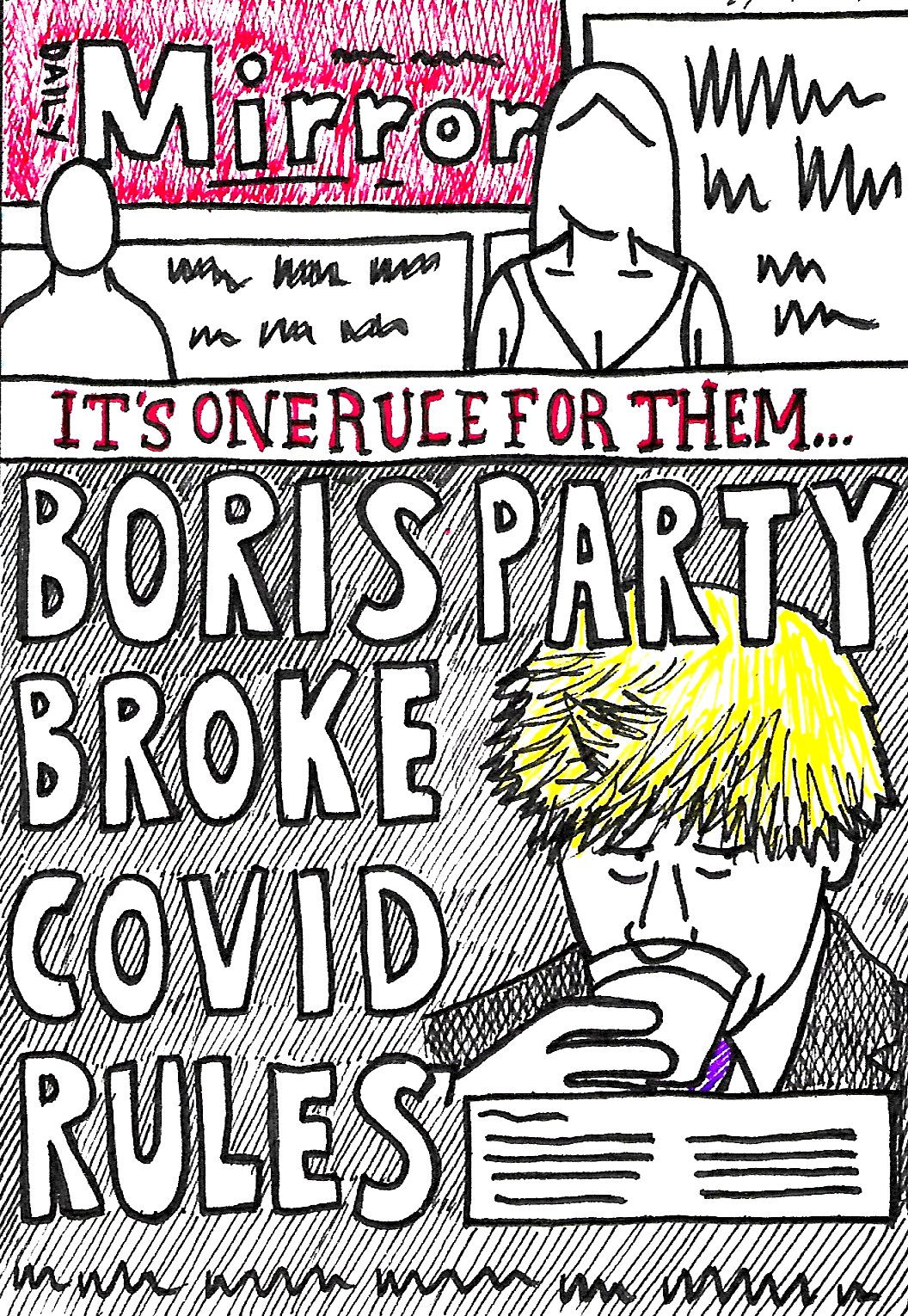
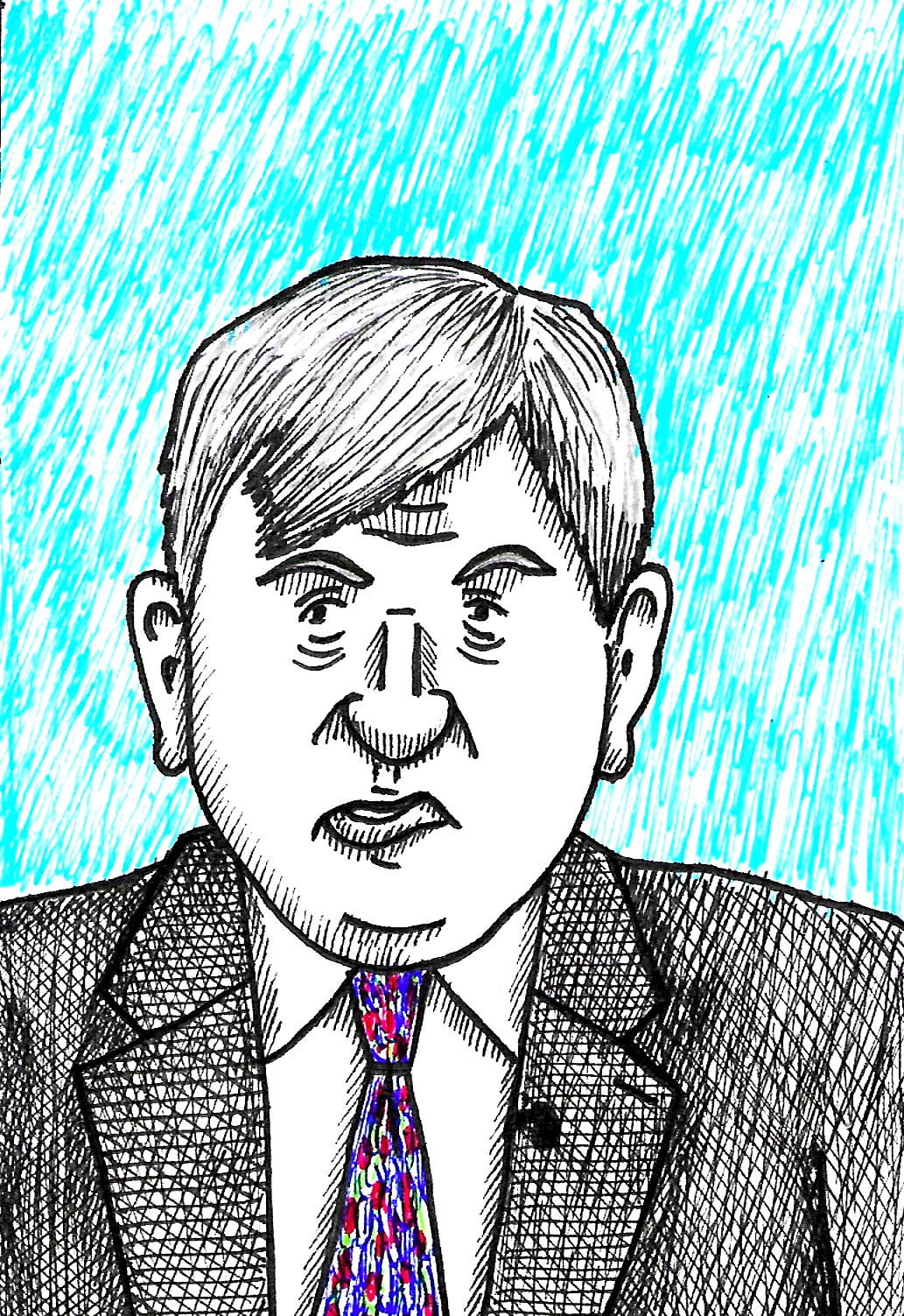
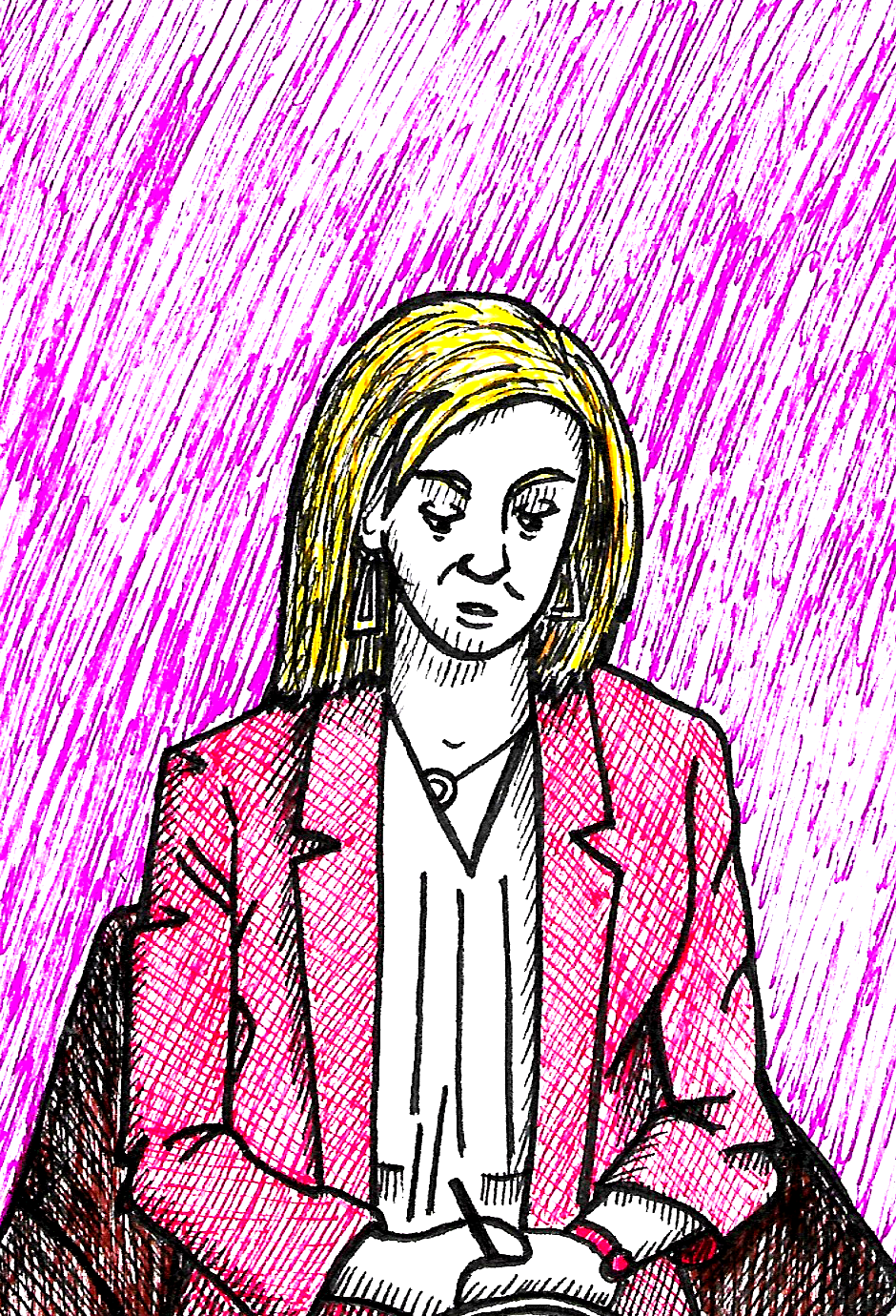
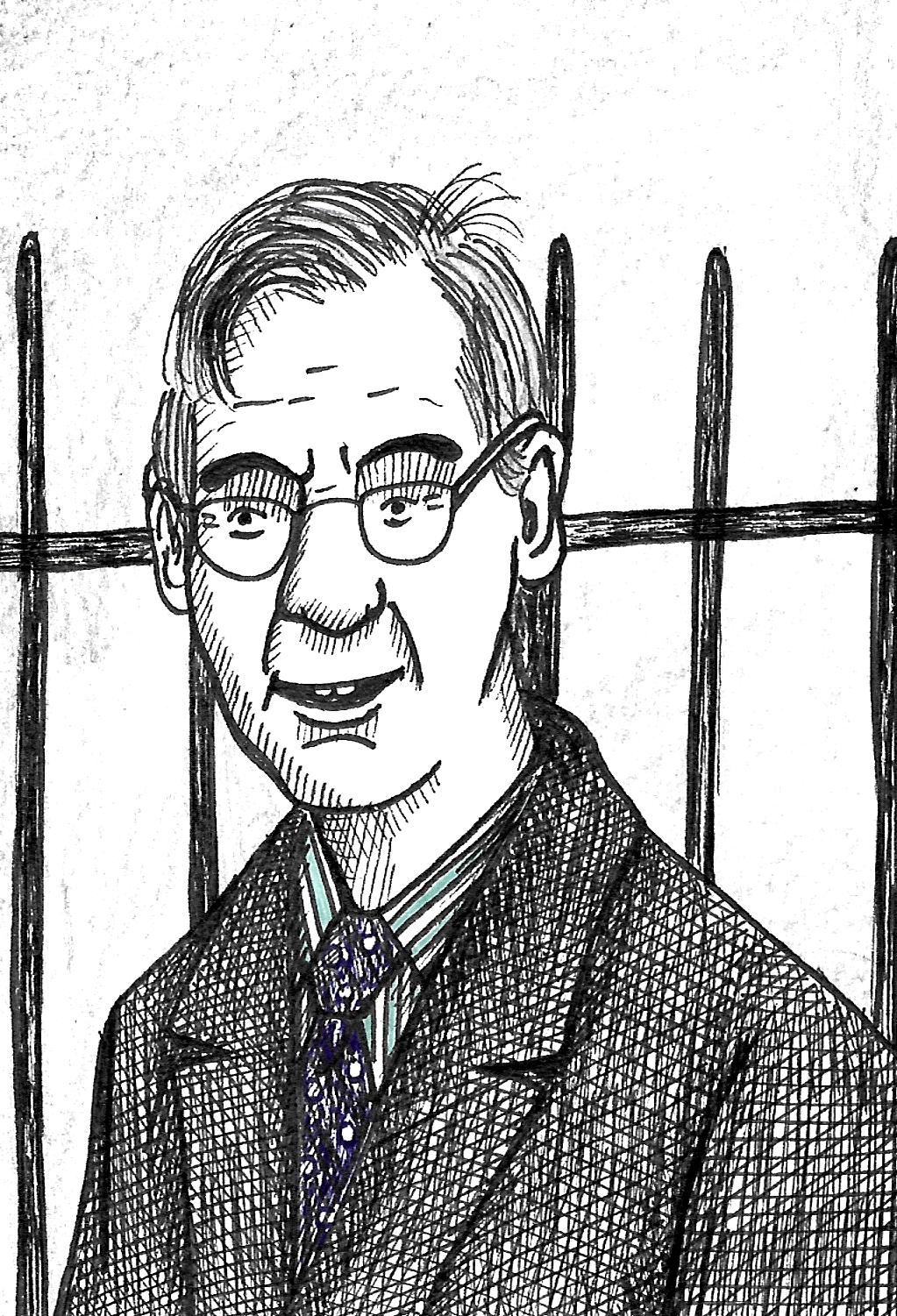
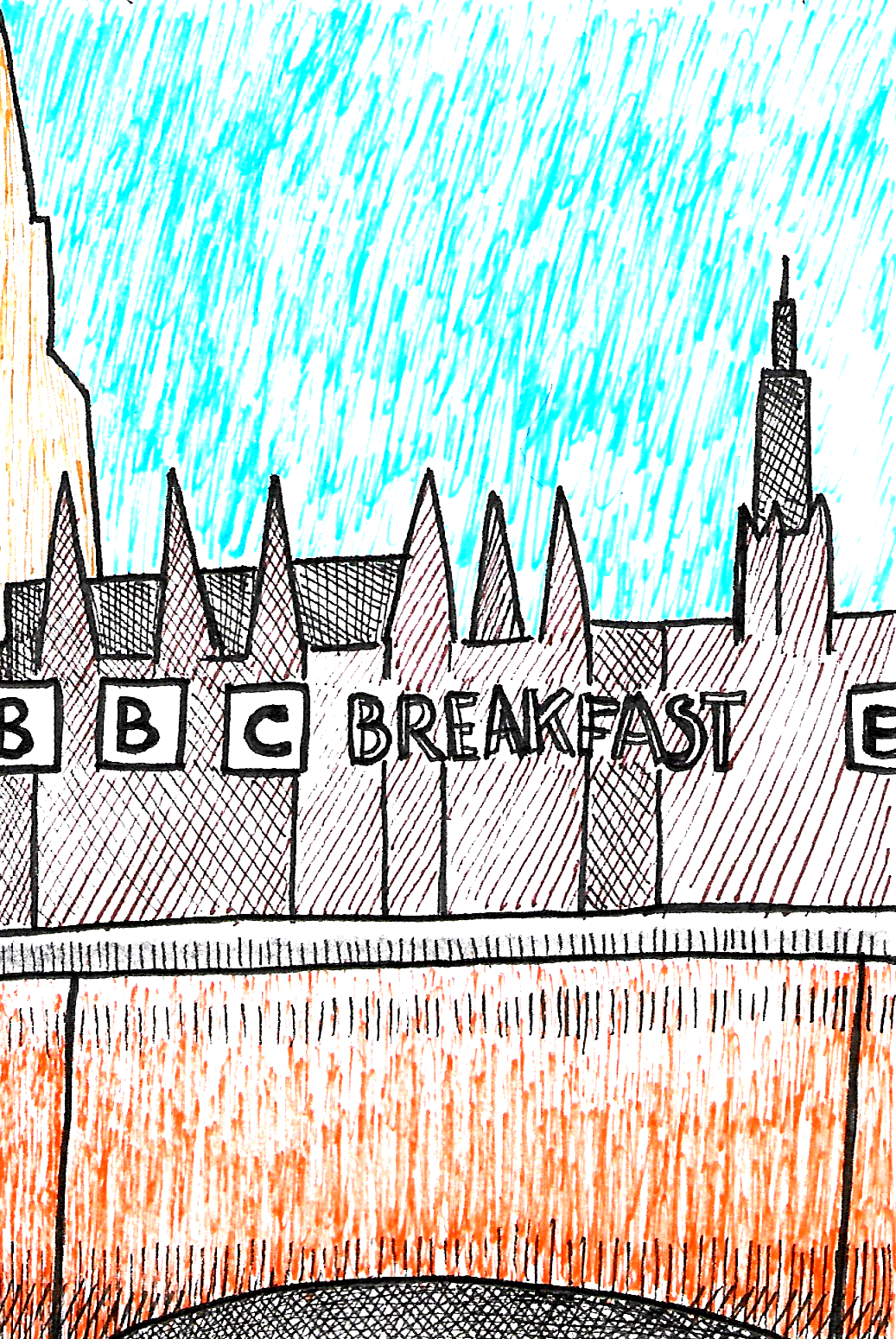
Adding Panels and Text to Pages
I was feeling happier with the panels so I moved them into Illustrator and created two artboards to set up the pages for the comic narrative. I realised that I had not really paid much thought to the placement of the text, in the form of captions/speech bubbles), so needed up spending a great deal of time on the layout.
Final Comic Narrative
The final version of the two page narrative can be seen below.
Final Thoughts
I found this exercise very challenging and I would not say I particularly enjoyed it, so I was quite pleased I managed to end up with a coherent final outcome. I did not have a clear enough plan at the beginning of the exercise, partly due to my slight lack of enthusiasm, which meant I had to figure most things out as I progressed. I would be happy not to try and draw another blazer for a while…
I felt using the coloured fineliners was a good decision and enjoyed experimenting with the application of these. I also benefitted from continuing to try drawing a variety of people.
In terms of reportage illustration, I probably would be more keen if I was more invested in the topic and present when the events took place, but based on this exercise it does not seem like an area of illustration I would thrive in.
Further Research
I had previously purchased and read The Arrival by Shaun Tan for an earlier Research Task. I found the artwork to be very evocative and powerful. The fact that Tan only used mainly graphite pencils for rendering was a source of wonder to me.
As suggested, I bought The Best We Could Do by Thi Bui and Palestine by Joe Sacco. I began reading the former whilst undertaking this exercise and, again, I have found myself to be completely absorbed in the story and visuals.
I admire the restrictive use of text, only adding the necessary explanatory captions, along with speech bubbles, to allow equal attention to be drawn to the images. I also like that Bui has limited herself to just using black and red ink (along with the white of the paper) to colour the story. The red ink is generally used as a wash, which can be utilised in numerous ways, e.g. to add atmosphere, colour clothing or to depict objects meant to be further away, so they are not so dominant in the picture. I also admire the way Bui uses a range of panel layouts, depending on the content or pace, sometimes removing the border lines altogether. I have found it to be a very well-considered and powerful visual story.
Reflections After Tutor Feedback
I agree with the observation my tutor made about digitally using layers, which would have enabled me to experiment with adding textures or patterns, for example, and increased the flexibility available to me to play with tone, etc. As noted in a response to feedback for a previous exercise, working in layers is definitely an area for me to explore and it would undoubtedly improve my work.
My tutor also suggested I comment on my choices of typefaces for this exercise. I always feel it is important to try and find typefaces that are reflective of their purpose, so I tend to make sure I spend time selecting these. Unfortunately I am not (yet at least!) an ‘expert’ on the different font families and how they ‘should’ be combined, for example, but instead I attempt to assess a selection of typefaces that I think could work. As well as, more obviously, having the role of containing textual information that needs to be conveyed coherently to the viewer, the choice of typeface can communicate in an almost subconscious manner in relation to the overall message of the piece, for example, it may have a more ‘friendly’, softer appearance or, conversely, it can exude a brashness.
In terms of this exercise, I felt the most important textual information was probably the words being said by the various individuals in each panel, so I selected a bold, comic-style typeface that stood out on the page and seemed to blend well with the style of the illustrations whilst being dominant compared to the caption text. On reflection, the entire series of events could be compared to a comedy show, so using a fun, cartoony font feels quite apt. As the title was a quote, I used the same choice just on a larger scale. The possibilities for the caption text was more restricted because, as stated in my write-up above, I had not pre-planned the positioning of this so I had to find a typeface that was readable at a small scale whilst fitting into the overall aesthetic of the piece.
References
BBC, (2021). Search results for Christmas party number 10. [online] Available at: https://www.bbc.co.uk/search?q=christmas+party+number+10&page=1 [Accessed 21 December 2021].
BBC News, (2021). Anger over Jacob Rees-Mogg Christmas party joke. [online] Available at: https://www.bbc.co.uk/news/uk-england-somerset-59601510 [Accessed 22 December 2021].
BBC News, (2021). Foreign Secretary Liz Truss: ‘We do follow the rules on Covid’. [online] Available at: https://www.bbc.co.uk/news/av/uk-politics-59575394 [Accessed 22 December 2021].
BBC News, (2021). Health Secretary Sajid Javid misses BBC Breakfast interview. [online] Available at: https://www.bbc.co.uk/news/av/uk-59575800 [Accessed 22 December 2021].
BBC News, (2016). ‘Reportage illustration’. [online] Available at: https://www.bbc.co.uk/news/av/entertainment-arts-36915751 [Accessed 21 December 2021].
Brazell, D. (2018). Reportage Varoom 35 – Melanie Reim. [online] The Association of Illustrators. Available at: https://theaoi.com/2018/05/10/reportage-varoom-35-melanie-reim/ [Accessed 21 December 2021].
Embery, G. (n.d.). Gary Embery. [online] Gary Embery. Available at: http://www.embury.co.uk [Accessed].
ITV News, (2021). No 10 ‘Christmas party’: A timeline of events, laws and denials’. [online] Available at: https://www.itv.com/news/2021-12-07/no-10-christmas-party-a-timeline-of-events-guidance-laws-and-denials [Accessed 22 December 2021].
Paperboy Online Newspapers, (2021). Daily Mirror (UK), Front Page for 1 December 2021. [online] Available at: https://www.thepaperboy.com/uk/daily-mirror/front-pages-today.cfm?frontpage=65366 [Accessed 21 December 2021].
The Association of Illustrators, (2018). Reportage Illustration – review. [online] https://theaoi.com/2018/05/23/reportage-illustration-review/ [Accessed 21 December 2021].
The Association of Illustrators, (2018). Working in Reportage Illustration – George Butler. [online] Available at: https://theaoi.com/2018/11/06/working-in-reportage-illustration-george-butler/ [Accessed 21 December 2021].
The British Newspaper Archive, (n.d.). Illustrated London News. [online] Available at: https://www.britishnewspaperarchive.co.uk/titles/illustrated-london-news [Accessed 21 December 2021].
The British Newspaper Archive, (n.d.). Penny Illustrated Paper. [online] Available at: https://www.britishnewspaperarchive.co.uk/titles/penny-illustrated-paper [Accessed 21 December 2021].
The Online Books Page, (n.d.). Harper’s Weekly archives. [online] Available at: https://onlinebooks.library.upenn.edu/webbin/serial?id=harpersweekly [Accessed 21 December 2021].
Wikipedia, (n.d.). Frontline Combat. [online] Available at: https://en.wikipedia.org/wiki/Frontline_Combat [Accessed 21 December 2021].
